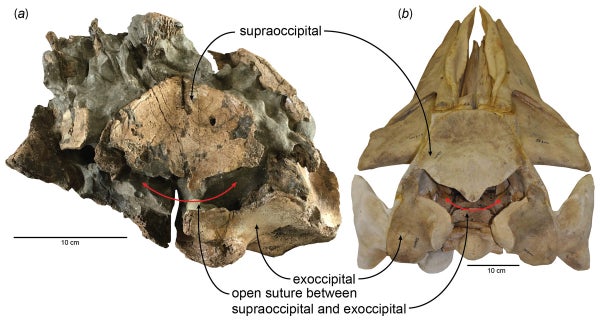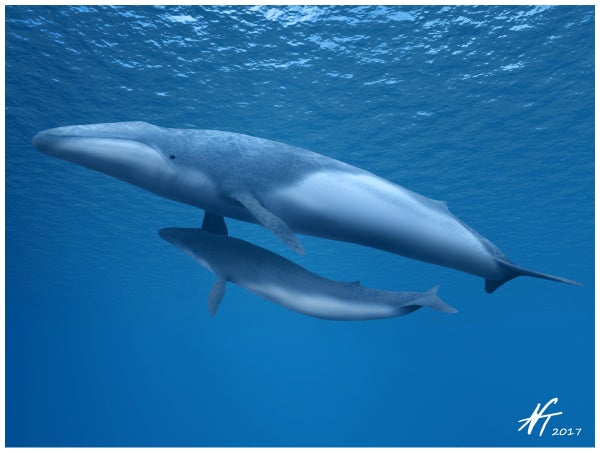This article was published in Scientific American’s former blog network and reflects the views of the author, not necessarily those of Scientific American
The case rests on a skull.
Found in Hiroshima, Japan, the roughly 16 million year old fossil is of an extinct baleen whale Parietobalaena yamaokai. It’s not the only one of its kind. Multiple specimens of the Miocene mysticete have been found in this place. But what makes this cranium stand out, paleontologist Cheng-Hsiu Tsai notes, is an open suture at the back of the skull.
Skulls can be a rough way to tell a mammal's age. In younger mammals, the skull bones haven’t fused together yet. There may be gaps between them, bridged by cartilage, or the sutures running between each piece are easily visible. Over time, those sutures close and erase themselves. In short, open and readily-visible sutures indicate youth while closed and obliterated sutures denote older life stages.
On supporting science journalism
If you're enjoying this article, consider supporting our award-winning journalism by subscribing. By purchasing a subscription you are helping to ensure the future of impactful stories about the discoveries and ideas shaping our world today.

The whale fossil whale skull, compared to a modern equivalent, showing the open suture. Credit: Tsai 2017
In the case of this comparatively small Parietobalaena, Tsai writes, the size and open suture suggests this was basically a newborn calf. The same trait can be seen in some modern baleen whales. On that basis, Tsai estimates that the whale was under six months old when it died. And if that’s the case, then it might mean the spot in the Miocene sea held special significance to the other whales buried in the same area.
The presence of such a young individual, Tsai proposes, might mean that what’s now Hiroshima was a whale calving ground back in the Miocene. This rests on the idea that the little whale wouldn’t have traveled very far after being born, and that the abundant remains of other Parietobalaena in the same formation indicate that this area was a place where these ancient whales congregated.
But did Parietobalaena behave like modern baleen whales? Did they make long migrations from feeding grounds to breeding grounds each year? For now, Tsai notes, these are unknowns. Perhaps future studies drawing from geochemical analyses of the whale bones might be able to solve the mystery. Through these clues, inside bones and out, we may begin to understand the lives of the ocean’s largest inhabitants.
Reference:
Tsai, C. 2017. A Miocene breeding ground of an extinct baleen whale (Cetacea: Mysticeti). PeerJ. doi: 10.7717/peerj.3711
